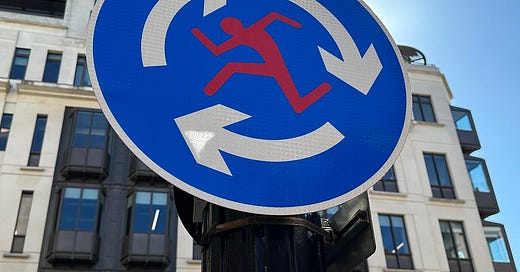The Micro-History of a Traffic Island
Everything has a history, and everything is connected.
Today, I’d like to talk about the history of traffic islands.
We have a lot of them in London. They help pedestrians get across busy roads by offering a refuge between lanes of traffic. Here’s one near Trafalgar Square, tested to its limits:
We have so many traffic islands in London that, contrary to all expectations, a few of them might …





